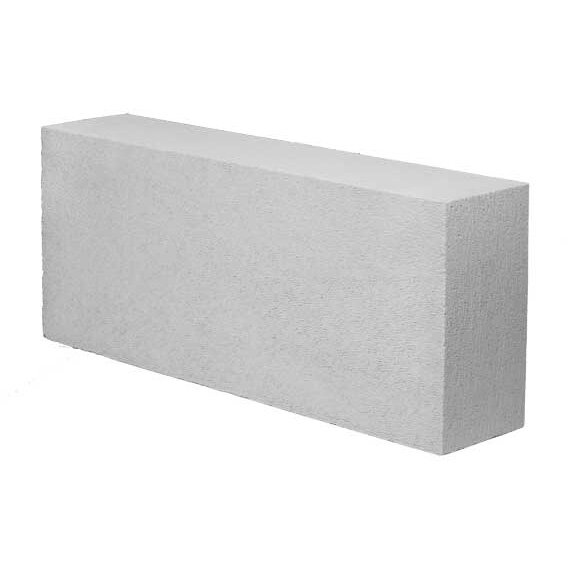Aerated concrete or brick
Today, we answer a fundamental question: what is the difference between AAC (autoclaved aerated concrete) and traditional clay bricks? To explore this question, we will compare two of the most well-known brands in Bulgaria—Ytong and Wienerberger Porotherm. Ytong represents the modern AAC technology, known for its lightweight structure and excellent thermal insulation, while Wienerberger Porotherm embodies the durability and strength of traditional clay bricks with an advanced hollow design for better insulation. In this experiment, we will dissect how these two materials perform in terms of cost, quality, insulation, construction speed, and weight.

The comparison between Ytong AAC bricks and Porotherm N+F Comfo bricks involves evaluating several factors: cost, quality, insulation, construction speed, and weight.
1. Price:
Ytong AAC brick (50x600x250 mm): 2.45 BGN per brick.
Porotherm N+F Comfo brick (250x380x238 mm): 1.5 million: 3.76 BGN per brick.
Conclusion: Ytong brick is cheaper per unit.
2. Quality:
Ytong AAC Brick:
- Made from autoclaved aerated concrete (AAC), which offers excellent thermal insulation, fire resistance, and sound insulation.
- Good dimensional accuracy and easy to cut.
- Resistant to moisture and mould.
Porotherm N+F Comfo Brick:
- Made from clay with a complex internal structure for better insulation.
- Provides strong load-bearing capacity.
- Natural material with good thermal inertia and breathability.
3. Insulation:
Ytong AAC Brick:
- Excellent thermal insulation properties due to the air pockets in the AAC material.
- Generally provides better U-values (thermal transmittance coefficient) compared to traditional bricks.
Porotherm N+F Comfo Brick:
- Good thermal insulation qualities thanks to its hollow structure.
- However, it typically falls short of AAC in terms of pure thermal insulation performance.
Conclusion: Overall, Ytong bricks offer better thermal insulation.
4. Construction speed:
Ytong AAC Brick:
- Larger in size and lighter, making it faster and easier to work with.
- Can be easily cut on-site, reducing construction time.
Porotherm N+F Comfo Brick:
- Requires traditional masonry methods.
- Heavier and smaller, so more bricks are needed for the same area, potentially increasing construction time.
Conclusion: Ytong AAC bricks generally allow for faster construction.
5. Weight:
Ytong AAC Bricks:
- They are lightweight due to the air pockets in the material, making them easier to handle and reducing structural loads.
Porotherm N+F Comfo Brick:
- Heavier due to the dense clay structure.
Final assessment:
- Price: Ytong is cheaper.
- Quality: Ytong is better for insulation, while Porotherm excels in structural strength.
- Insulation: Ytong offers better insulation.
- Construction Speed: Ytong allows for faster construction.
- Weight: Ytong is lighter.
- Overall, if your priorities are insulation, speed, and cost, Ytong AAC bricks are generally the better choice. However, if you need sturdier and more durable bricks for load-bearing walls or prefer natural materials, Porotherm bricks may be more suitable.
.
Quick calculation
To calculate the approximate cost of materials for constructing a wall measuring 5 meters wide and 2.60 meters high, we compare two of the most popular products in Bulgaria—Ytong and Porotherm.
For a wall area of 13 m²:
- If using Ytong, approximately 87 bricks will be needed, costing about 213.15 BGN.
- On the other hand, using Porotherm will require around 144 bricks, costing approximately 541.44 BGN.
The conclusion is that Ytong offers a more economical solution, especially if the priority is low cost and better insulation.
Alternative to aerated concrete and brick.

Alternatives to aerated concrete (AAC) and traditional bricks include various building materials that offer specific advantages depending on the project’s needs. Here are some popular alternatives:
1. Calcium silicate blocks (silicate bricks)
- Advantages: Excellent sound insulation, good thermal insulation properties, and high strength.
- Applications: Suitable for load-bearing walls and external facades.
- Disadvantages: Heavier and more difficult to work with compared to aerated concrete.
2. Timber frame
- Advantages: Environmentally friendly, quick to construct, with good thermal insulation properties.
- Applications: Suitable for single-family homes and low-rise buildings.
- Disadvantages: Lower resistance to moisture and fire, requiring additional protection.
3. Reinforced Concrete
- Advantages: Exceptional strength, suitable for tall buildings and heavy loads.
- Applications: Load-bearing structures of high-rise buildings and industrial facilities.
- Disadvantages: Poor thermal insulation and requires additional insulation.
4. Ceramic blocks
- Advantages: Very good thermal insulation properties, moisture-resistant, and fire-resistant.
- Applications: Load-bearing and non-load-bearing walls in residential and public buildings.
- Disadvantages: Higher cost compared to aerated concrete and traditional bricks.
5. Siporex
- Advantages: Lightweight and exceptionally good for thermal insulation, easy to work with, and fire-resistant.
- Applications: Similar to aerated concrete, suitable for constructing walls and internal partitions.
- Disadvantages: Some types are brittle upon impact.
6. Polystyrene Concrete
- Advantages: Very lightweight with excellent thermal insulation properties, moisture-resistant.
- Applications: Suitable for non-load-bearing internal and external walls.
- Disadvantages: Not as strong as traditional concrete or bricks.
7. Adobes
- Advantages: Environmentally friendly, excellent heat retention, breathable walls.
- Applications: Suitable for eco-friendly constructions and passive houses.
- Disadvantages: Lower mechanical strength and moisture resistance.
8. Glass Fiber Reinforced Panels
- Advantages: Lightweight, durable, and resistant to moisture and chemicals.
- Applications: Primarily used for facades and internal walls in industrial facilities.
- Disadvantages: More expensive and not as widely available.
9. Sandwich panels
- Advantages: Easy and quick installation, good thermal insulation, and resistance to external influences.
- Applications: Most commonly used in industrial construction and temporary structures.
- Disadvantages: Not suitable for load-bearing structures, with limited architectural possibilities.
Conclusion
The choice of an alternative to aerated concrete or traditional bricks depends on the specifics of the project, such as insulation needs, construction costs, architectural requirements, and the durability of the materials.



